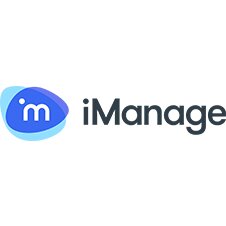Industry case study from iManage: Lawyer’s intuition
This article was also featured as an industry case study in the September 2016 issue of Briefing. To read the issue in full, download Briefing.
How do your persuade busy lawyers to use your piece of technology as intended to improve personal productivity and firm performance? It’s the million-dollar question for legal software suppliers – but could the answer actually be: ‘Get them to be part of the design team’?
That was certainly in the thinking mix leading the effort to improve lawyer user experience with the release of iManage Work 10 (later in 2016). Project ‘White Rabbit’, as it’s intriguingly known, has involved the input of hundreds of lawyers globally.
That’s no little commitment from the participating firms, such as DAC Beachcroft – but IT director David Aird says it’s a price that’s clearly worth paying.
“As we’ve increased our support for agile working, we in turn need applications that support that. Mobile working – on the train, the tube or at a client – now means so much more than sending off some emails. Documents must also be available on the move, including multiple versions of the same one for review.”
New releases of document management software typically add features over the course of a year, he says. “But this product was built from the ground up, with iManage gathering the requirements. It begins from the position of how lawyers really want to work, rather than how a software company, or a firm’s IT department, thinks they might work.”
App happy
Before building anything there are interviews with some 300 lawyers at offices as afar afield as the USA and Australia. But the really innovative part – and where DAC Beachcroft has made its mark – is what happens next. Several lawyers are put in a room with the first beta of the software. They have no instructions whatsoever – and are filmed completing a set of tasks.
Observing from the wings, and videoing lawyers as they navigate normal daily tasks, iManage now uses their physical responses to rewrite parts of the product (in the case of DAC Beachcroft, for example, search) – the principle being that if something needs explaining in the digital age, the most likely truth is it isn’t working as well as it should.
“They are trying to get a solution that just works, without the training,” says Aird. “This is exactly what we need for professionals today, who often don’t have time for training.”
More than one firm is involved in each location to reflect a wide range of legal business needs – and each ‘pod’ of these testers and developers works on different IT angles, responding to the firms’ feedback to create a complete solution.
Aird says the obvious benefit of improving work/life balance – as well as the background of a recent switch to a mostly Android fleet – saw the firm’s lawyers keen to be involved in supporting the cause of intuitive agility.
“We chose some people that were especially enthusiastic, but also a set who said they were challenged around agility and really needed new ways of working,” he says.
iManage Work is a full desktop application. But people don’t want to be continually switching between their different devices, says Aird. “If you’re on the train or at home, sometimes your tablet or phone is just where you are at the time. That makes it the best tool for the job.
“However, many products just don’t work that well in this ‘swipe’ environment, especially if you’re flicking through hundreds of pages in folders. They jar.”
Lawyers can swipe through a document, for example, and “finger-expand” to zoom in on one reference and then call up the generation history, all by touch.
“You can still point and click if you wish, but it’s not necessary – and that makes the mobile life much easier,” explains Aird.
“And rather than a screen covered in icons, capabilities only really appear when you need them. Everything’s distilled down, and the rest hidden, but you can also quickly drill down to find a few more options.”
School’s out
One would hope another business benefit of achieving the ultimate in ‘intuitive’ UX is to cut the cost of the firm’s training budget.
“Our IT surveys of lawyers and feedback groups show that while they might like more training, they feel they just don’t have the time for it,” says Aird. “Even with webinars, they may forget or struggle to make the time. Deciding delivery methods, and then rolling it out, is probably a huge challenge for any firm – but it’s no exaggeration to say that this is so simple that training becomes an irrelevance.”
Updates to iManage Work are instead introduced through a sequence of icons that appear the moment you focus on a new task to direct you to supporting material – so-called ‘just-in-time training’.
“It’s just as I’m about to do something that I really want to know how to do it,” says Aird.
But of course, the vision for iManage is that they shouldn’t really need to ask in the first place.



